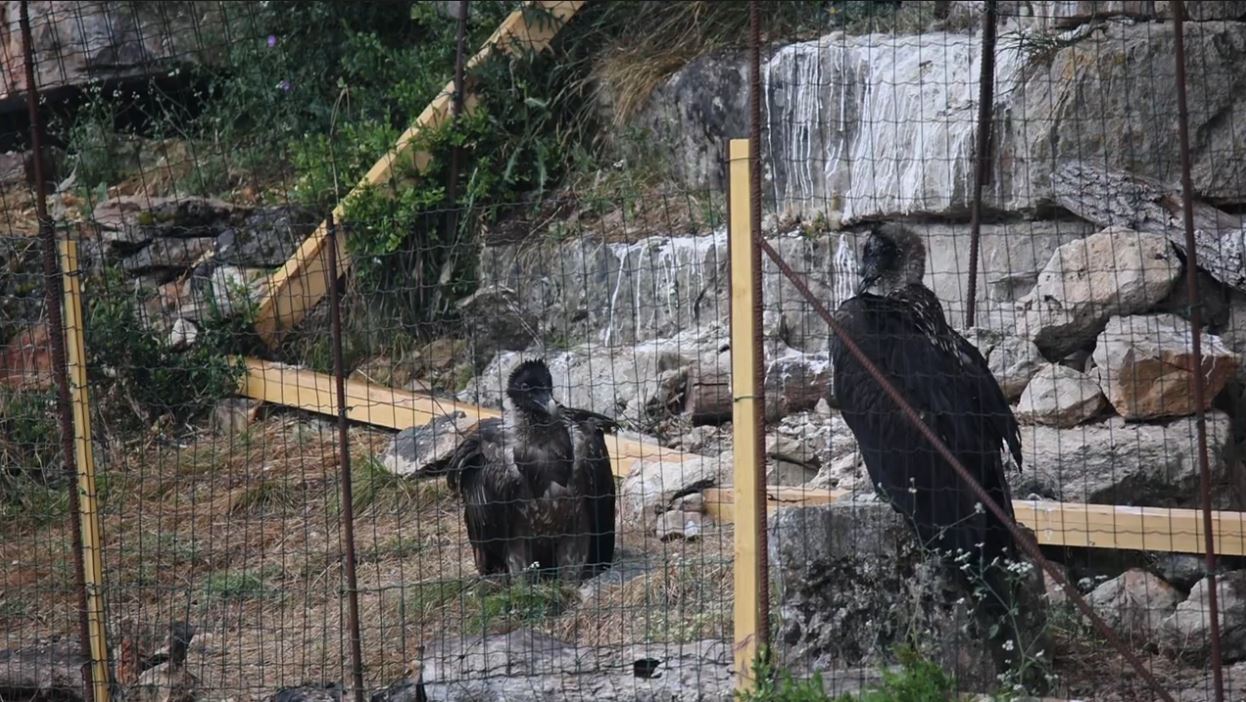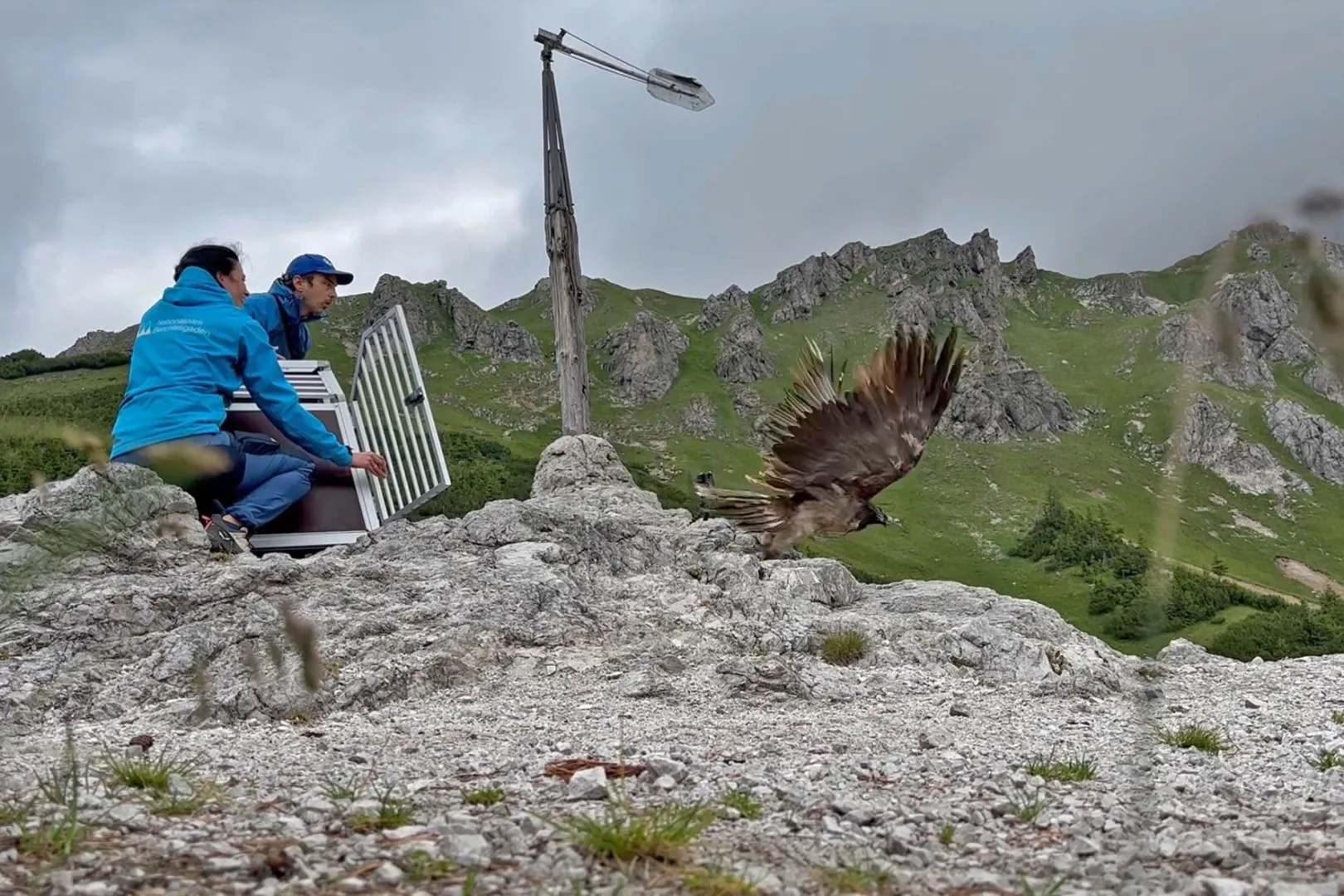The bearded vulture captive breeding season in now in full swing – both in the wild and in the captive breeding network, managed by the Vulture Conservation Foundation (VCF), for reintroduction projects. There are now around 50 eggs being incubated across Europe – but one of them is more special than the others. Because it is a testament to the commitment and effort of people involved in bearded vulture conservation. Because it is Kirma´s egg
Kirma is a female that was first seen in the wild in the Spanish Pyrenees in 2010 with a serious injury in its lower mandible – see photo from José Antonio Sesé, from Navarra. For some months, it was seen here and there, wandering between several feeding stations in Aragon and Catalonia.
On the 13th April 2012 the female was found on the ground, very weak, with a severe limp on its left leg, in the National Hunting Reserve of Boumort (Lleida), and was then immediately captured and immediately transferred to the wildlife rehabilitation Centre of Vallcalent, managed by the Generalitat (Catalan regional government).
The diagnosis was severe – total loss of sensitivity of its left leg, large necrosis area at the distal part of the third finger of its left foot, and that horrific beak injury (see photo). It is suspected that Kirma suffered from electrocution in a power line, that caused those injuries to the left limb. As soon the bird was stabilized -four days after its admission-, the distal phalanges of the one finger of its left foot had to be amputated, because of necrosis.
When most would have given up, the team at Vallcalent decided to try for the best. With the help of veterinarians, they developed a treatment programme, including medication, and physiotherapy treatment, and established a specific handling protocol, to try to reduce as much as possible the stress that the bird would be submitted due the daily therapy. Kirma was soon transferred to the Vallcalent Captive Bearded Vulture Breeding Unit, where visual contact with its conspecifics helped her stabilize quickly.
Little by little, Kirma started to recover. The bearded vulture underwent a total of 40 physiotherapy sessions to recover the sensitivity of the affected leg – these included manual manipulation, electrotherapy and laser to stimulate the regeneration of necrotic tissue and restore mobility and sensitivity of the affected extremity (see photo). These sessions were possible thanks to the generous co-operation of the Physiotherapy Centre Kirma (hence the name of the female).
Bu June 2012 the foot was healed, and 6 months later she started to show a more normal behavior towards its captive conspecifics. However, probably due to its physical disability, the female showed a very subordinate behavior, which complicated its pairing.
The first pair bonding attempt -realized during the breeding season 2012-13- failed. It was then decided to try to find a gentler male inside the European Endangered Species Programme (EEP), managed by the VCF, in a partnership with the European Association for Zoos and Aquaria (EAZA). A male from the specialized bearded vulture captive breeding centre Guadalentín (managed by the Junta de Andalucia) arrived at Vallcalent on the 23rd May 2013.
Already in the following breeding season (winter 2013-2014) the first pair bonding evidence could be detected: nest building and matting attempts. This year (2014-15), bonding continued, and the first mating was observed on the 18th November 2014. Two months later, on 18th January, Kirma laid its first egg.
This is outstanding – a severely injured female with a wild origin, partly disabled, but carefully nursed back to health, started to breed in captivity! It is also a testament of the huge effort – and the real commitment to this species – from the technicians from the Department of Agriculture, Livestock, Food and the Environment of the regional government of Andalusia, and staff from the VCF, all working together at Vallcalent.
Kirma is a symbol – of resistance, resilience, but also of commitment and hard work for the restoration of this species. Each single egg – every young born in the captive breeding network is extremely valuable, because they are at the basis of the reintroduction projects currently ongoing in the Alps (with huge success 30 pairs raised 19 young – a new absolute record last year), Grands Causses and Andalusia.
Kirma – keep on fighting. We expect your baby to hatch on the 13th of March!
Yoy can see some of the news that appeared in the Spanish press about Kirma
http://www.efeverde.com/noticias/quebrantahuesos-discapacitada-cautividad-huevo/



